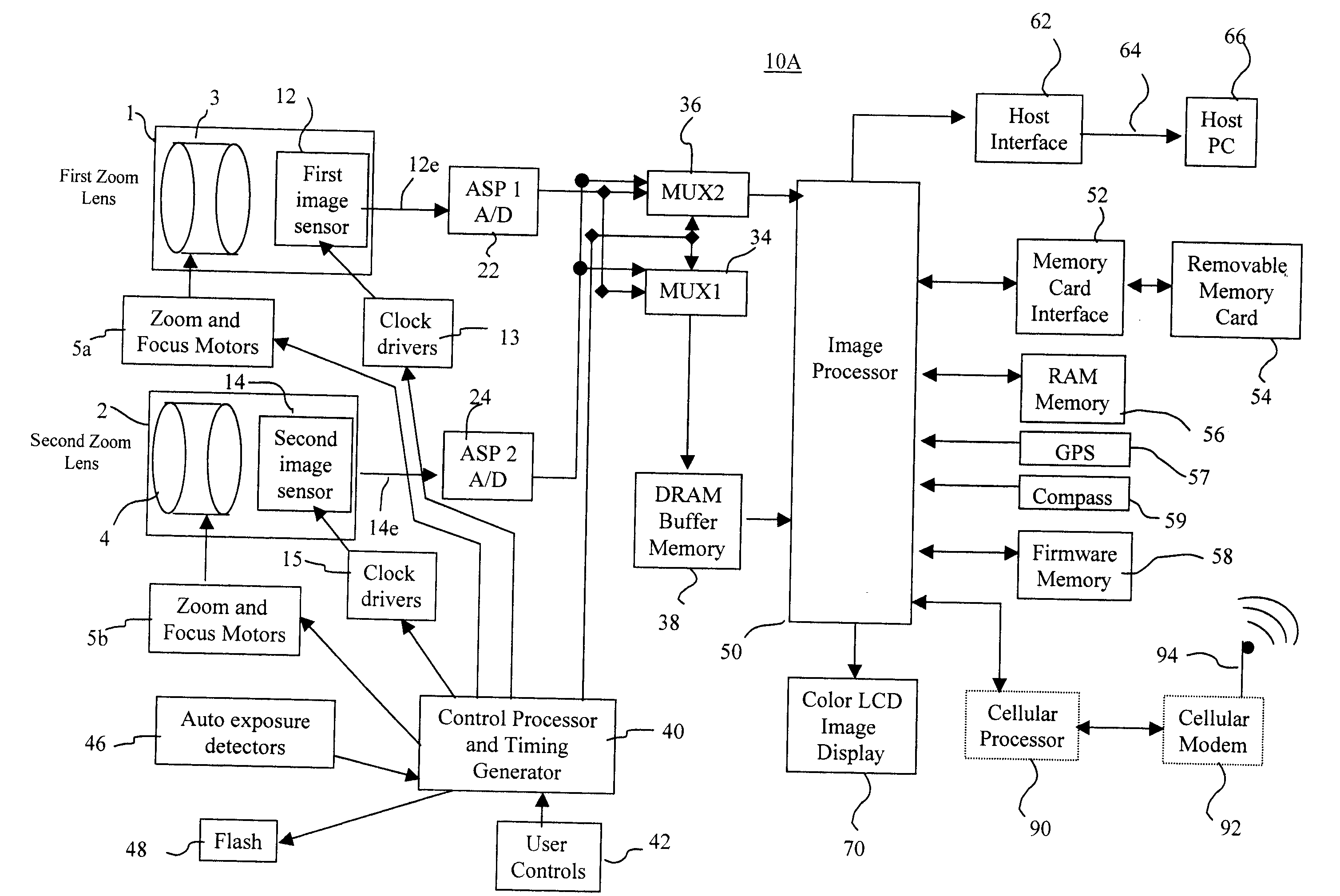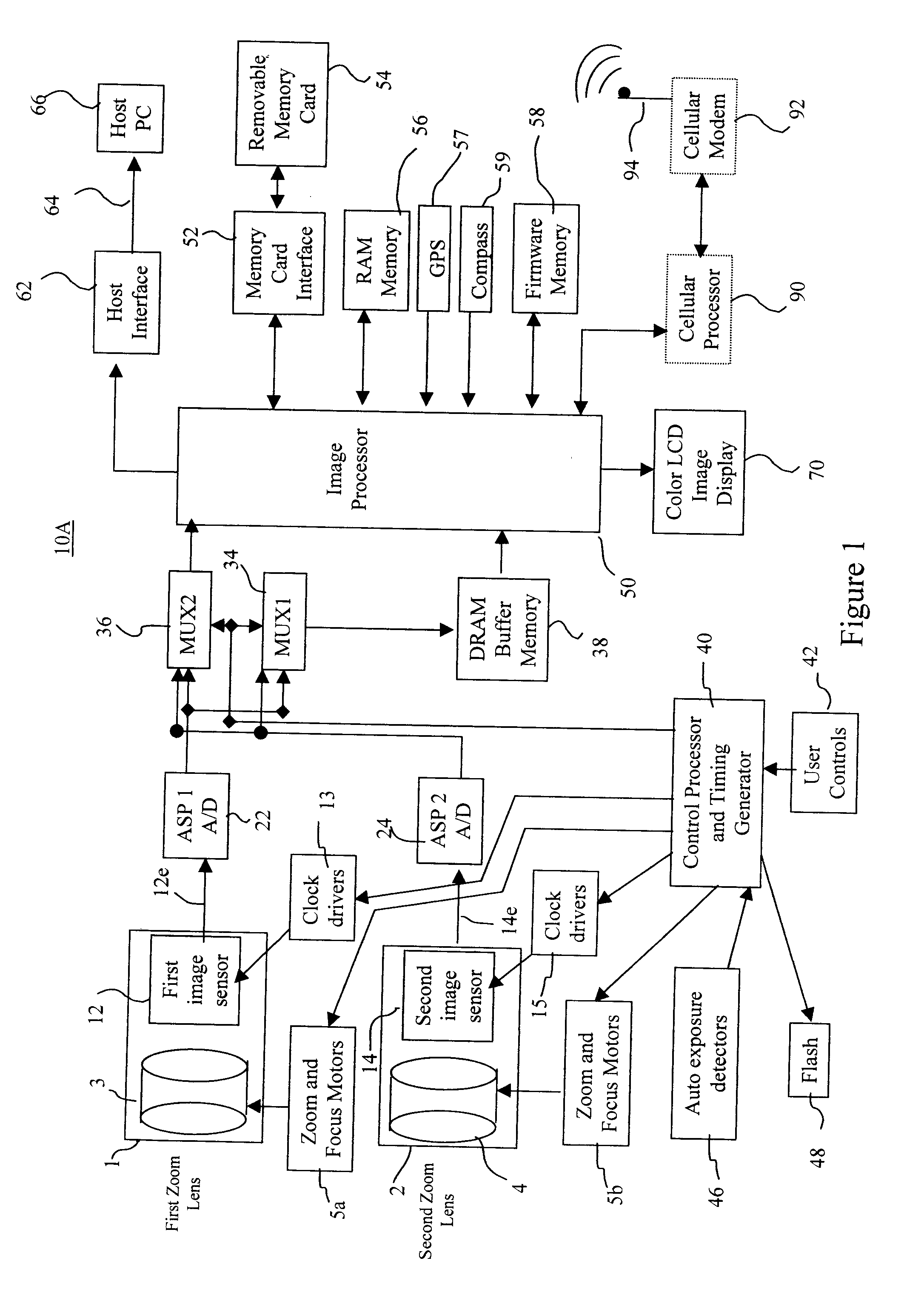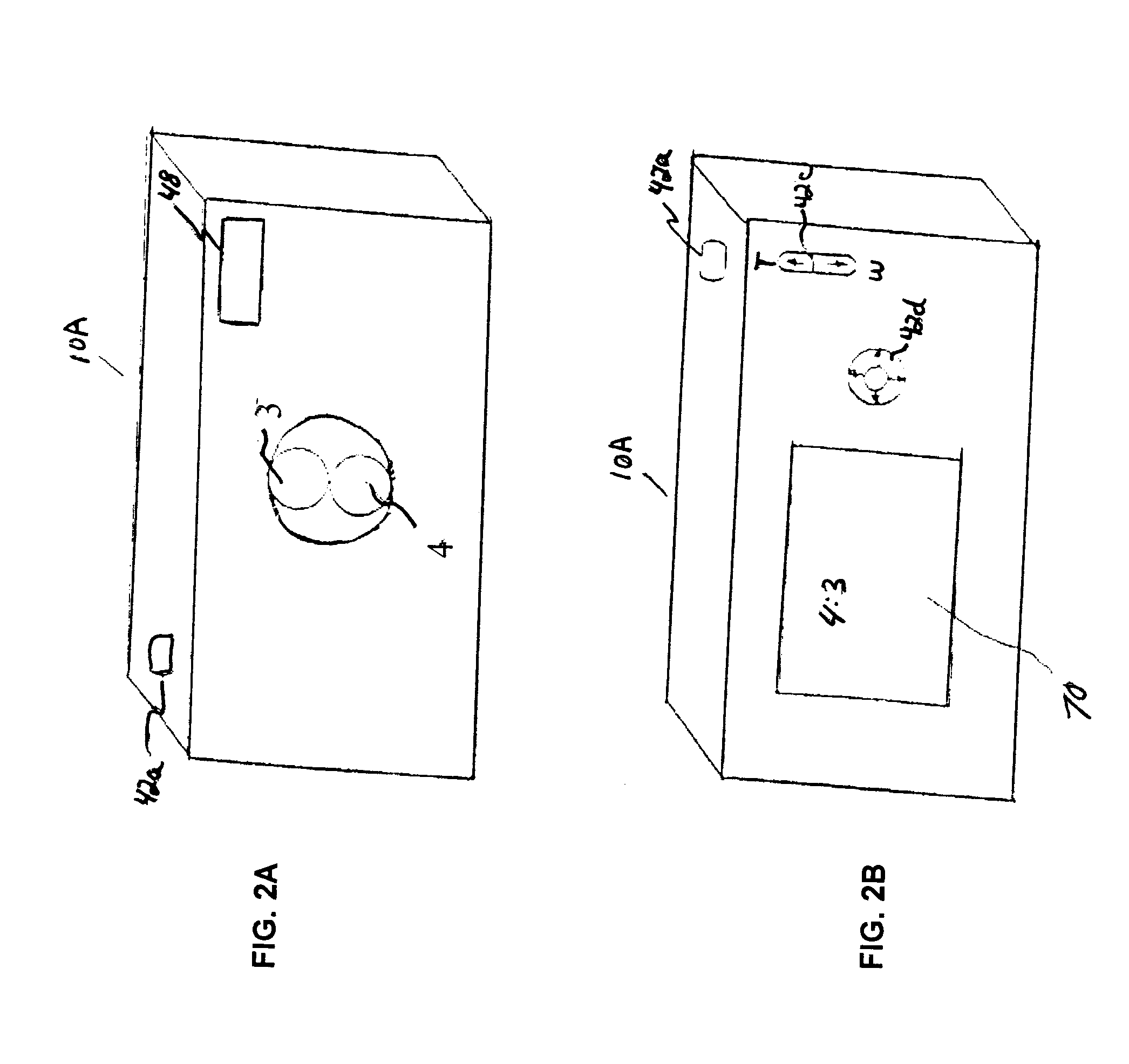Camera using multiple lenses and image sensors to provide improved focusing capability
a technology of image sensors and cameras, applied in the field of digital cameras, can solve the problems of inability to accurately determine the focus setting of the “through-the-lens” autofocus system, inability to adjust the focusing position of the dual lens rangefinder module within the normal operating environment of digital cameras, and inability to produce accurate results. , to achieve the effect of rapid autofocus, precise, and increasing the size or cost of the digital camera
- Summary
- Abstract
- Description
- Claims
- Application Information
AI Technical Summary
Benefits of technology
Problems solved by technology
Method used
Image
Examples
Embodiment Construction
[0069]Because digital cameras employing imaging devices and related circuitry for signal processing are well known, the present description will be directed in particular to elements forming part of, or cooperating more directly with, apparatus in accordance with the present invention. Elements not specifically shown or described herein may be selected from those known in the art. Certain aspects of the embodiments to be described may be provided in software. Given the system as shown and described according to the invention in the following materials, software not specifically shown, described or suggested herein that is useful for implementation of the invention is conventional and within the ordinary skill in such arts.
[0070]Each of the several embodiments of the invention described herein include an image capture assembly, such as a digital camera—still or video—or a digital scanner, having multiple image capture stages, each composed of a lens and an image sensor, wherein the l...
PUM
 Login to View More
Login to View More Abstract
Description
Claims
Application Information
 Login to View More
Login to View More - R&D
- Intellectual Property
- Life Sciences
- Materials
- Tech Scout
- Unparalleled Data Quality
- Higher Quality Content
- 60% Fewer Hallucinations
Browse by: Latest US Patents, China's latest patents, Technical Efficacy Thesaurus, Application Domain, Technology Topic, Popular Technical Reports.
© 2025 PatSnap. All rights reserved.Legal|Privacy policy|Modern Slavery Act Transparency Statement|Sitemap|About US| Contact US: help@patsnap.com



